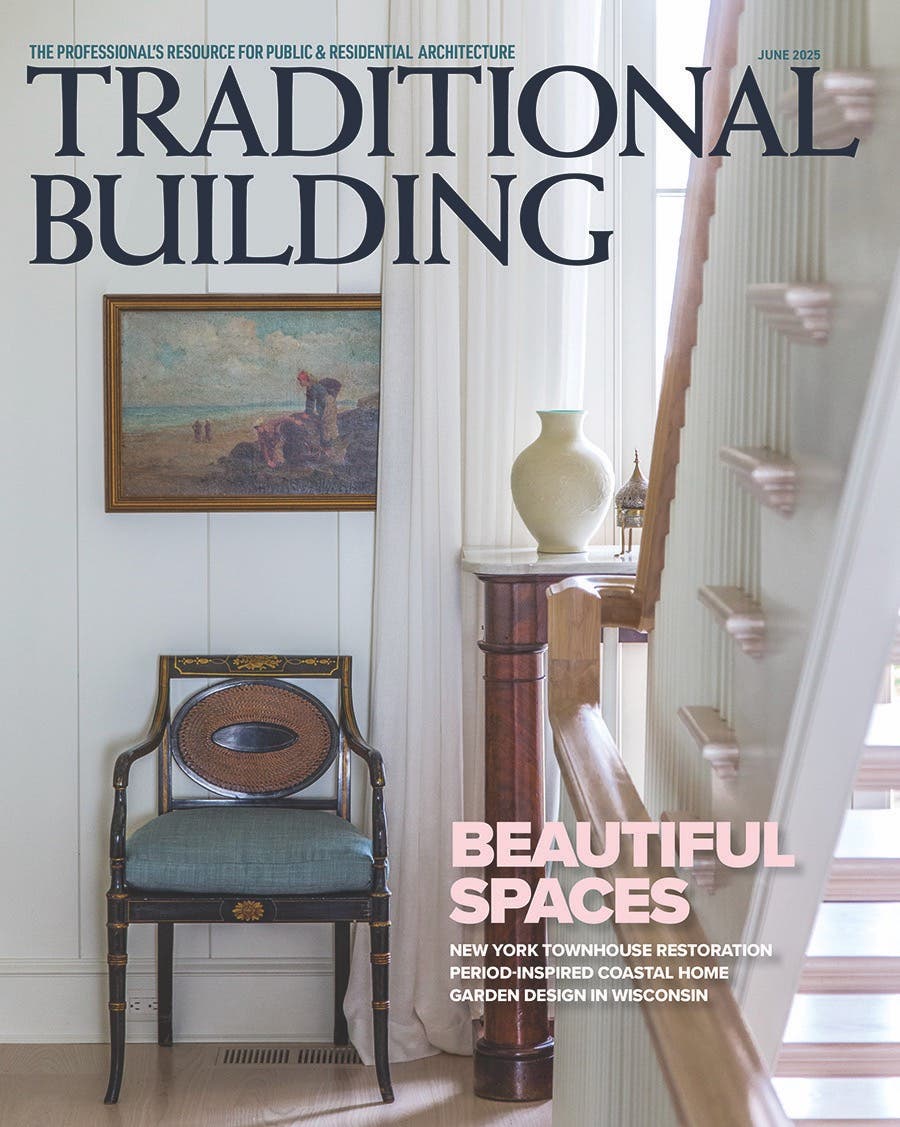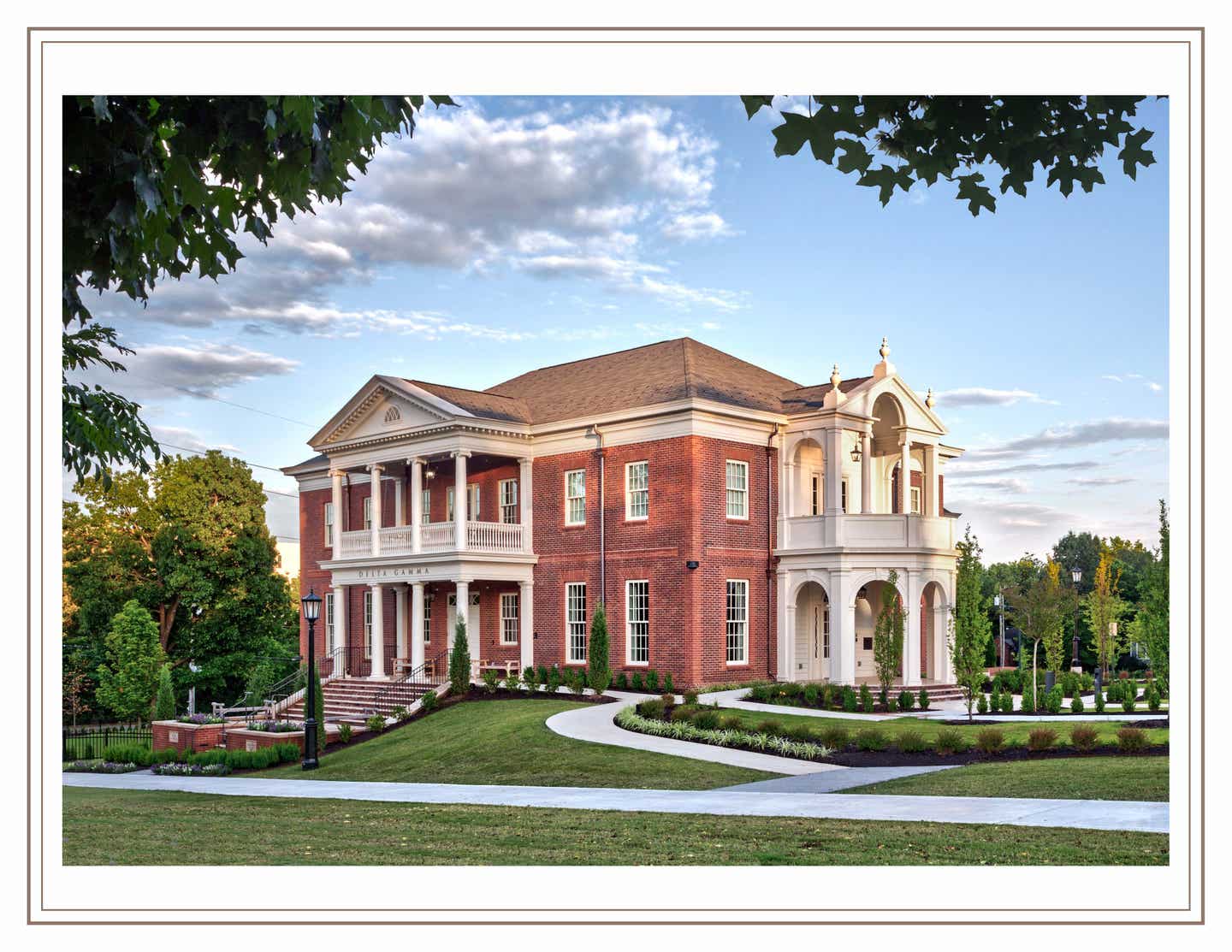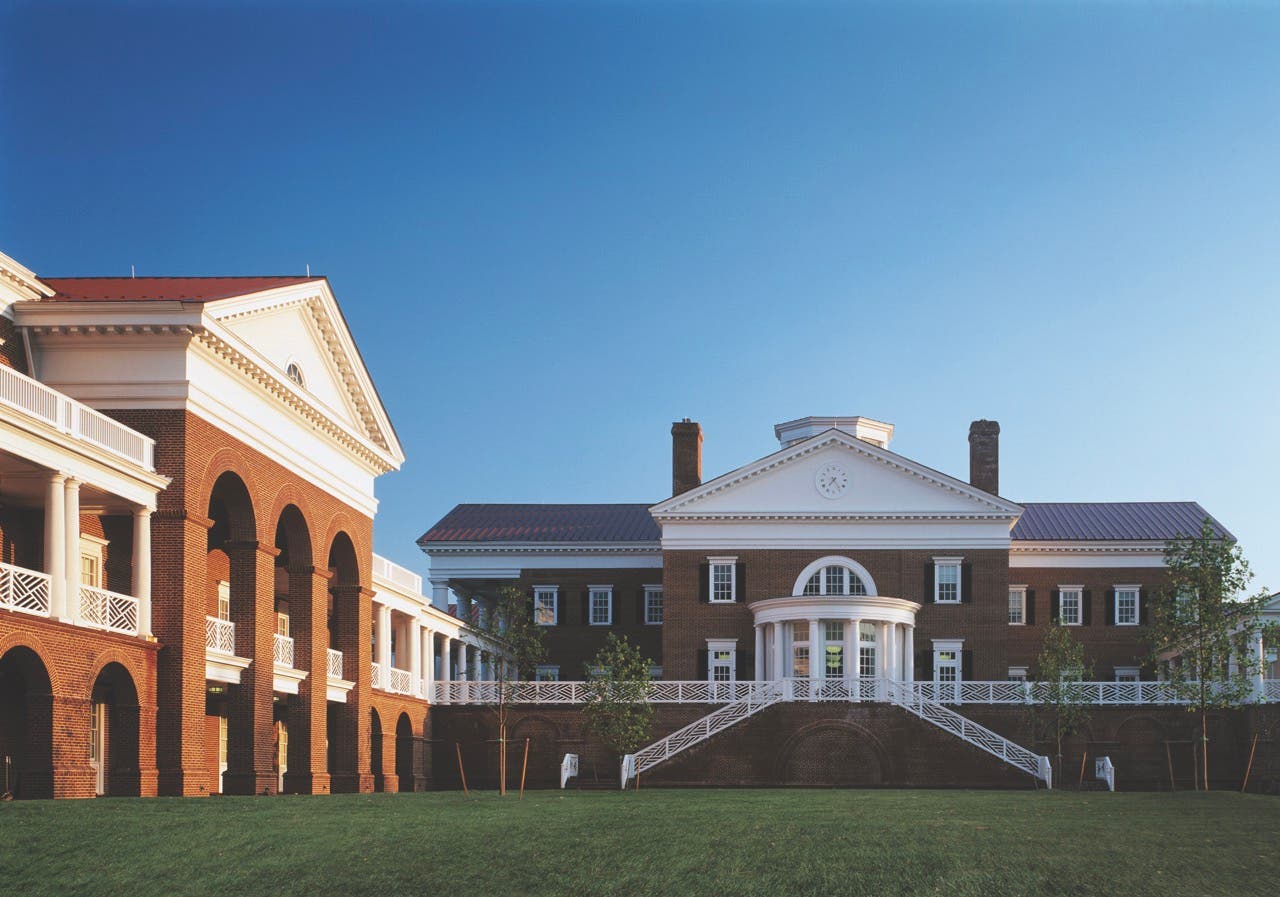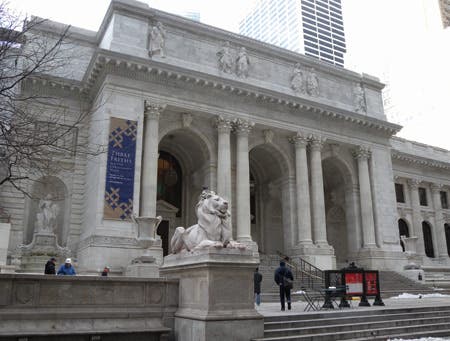
Features
Making Room for Traditional Architecture

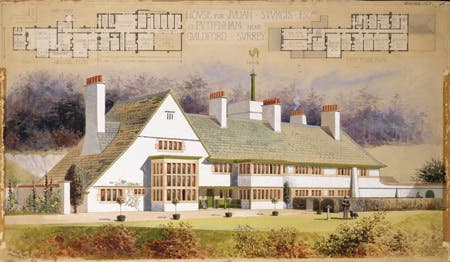

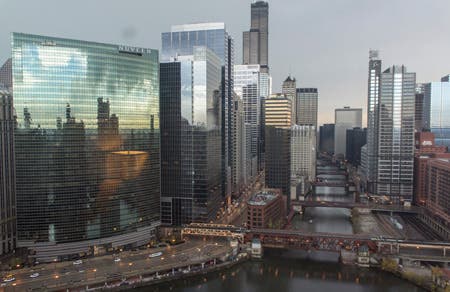

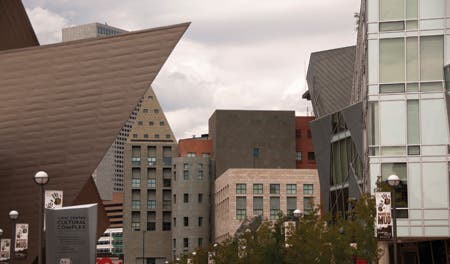


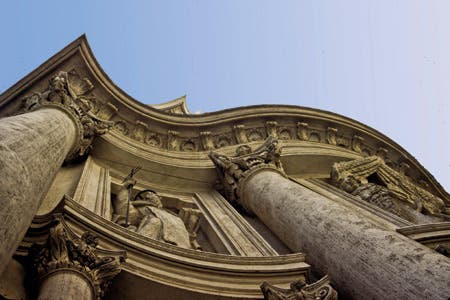
A noted architectural educator refutes the common arguments Modernists use to dismiss contemporary traditional architecture.
By Mark Gelernter, Ph.D.
Mark Gelernter, Ph.D., has written several books addressing the ideas architects use to explain or justify their design approach. In this essay, he examines five arguments commonly used by Modernists to promote their approach as fundamentally different from, and inherently better than, traditional design. Gelernter lays out the shortcomings of these arguments and shows how Modernism is just another style like the traditional styles it rejects. This opens the door for architects to choose Modern or traditional as the conditions of the project and context may dictate. – Martha McDonald
In recent presentations to the Traditional Building conferences and in the August Forum of Traditional Building magazine, I discussed the most common arguments used by Modernists to dismiss traditional design. In this essay, I will examine and rebut these ideas in greater detail.The five most commonly heard arguments against traditional architecture are:
- Traditional design is about style, and style is about superficial appearance. Good buildings are shaped by deeper ideas.
- Good architecture expresses its own age. Traditional design expresses an age gone by.
- Using traditional design languages today creates replicas that are not authentic, like Disneyland.
- Traditional design is not progressive, because it does not move the discipline forward through innovation.
- If one insists on using traditional design languages, one must adhere strictly to the traditional rules or a cartoon will result. This discourages creativity.
These arguments against tradition are deeply rooted in our contemporary conceptions of design. They are found in the architecture press, in the design schools, and in the everyday understanding of design among most architects. They are so deeply rooted that they seem self-evident and beyond discussion, like the phrase "form follows function."
These anti-traditional ideas are neither inevitable nor self-evident truths, despite them feeling so to us today. They were developed at the turn of the 20th century to serve particular purposes that may have made sense at the time, but do not hold true today. These ideas were drawn from a number of different sources and then pulled together into what appeared to be a coherent theory of design; but there are a number of inconsistencies among these ideas, and inconsistencies with the evidence of the built environment.
My aim is not to promote traditional design at the expense of modern, but merely to rid us of ideas once created to slant the playing field very much in favor of Modernism only. Freed from these outdated and sometimes illogical concepts, architects should feel free to choose traditional or modern according to need and appropriateness, instead of ideology.
Origins of the Anti-Traditional Ideology
The efforts to reject all architectural tradition originated at the turn of the 20th century, a period of exceptional worldwide political and cultural turmoil. Massive industrialization, together with unprecedented population growth and urbanization, disrupted or destroyed many traditional patterns of living.
Increasing conflicts arose regarding fundamentally different choices for the future: machine or handcraft; capitalism or socialism; imperialism or democracy; cities or the countryside. These choices were so starkly drawn that individuals felt compelled to choose sides. No middle ground seemed possible or desirable. The broader political tensions eventually exploded in the First World War, and led to the Bolshevik Revolution in Russia.
Architects gave expression to these stark choices with three broad architectural directions. The early Modernists focused on what they believed were the salient features of the early-20th century, seeing in machine-like buildings the real essence of the industrial age.1
The Progressives, evolving from Gothic Revival into Arts and Crafts and eventually leading to Frank Lloyd Wright, focused on the evils of industrialization and championed a return to a medieval, handcrafted world view in which individuals were more in harmony with each other and nature. And the Academic Eclectics, exemplified by the Ecole des Beaux-Arts, believed the traditional architectural styles continued to express universal human values even as the world changed in other ways.1
The Progressives and the Academic Eclectics still used traditional architectural design languages, updated to reflect contemporary needs and sensibilities. But the Modernists rejected the use of traditional design altogether. According to them, an entirely new age had emerged, driven and shaped by machines. Machines drew on no long traditions, but were invented in response only to function and purpose.
Architecture similarly should be freed of previous tradition and shaped solely by its contemporary realities and needs. The catastrophic First World War hardened their rejection of tradition. For many, the old cultural and political ideas had led Europe to ruin, and so nothing could be learned from a failed past. A new world would have to be built on entirely new ideas, for which there should be a new and unprecedented architecture.
Each movement saw the inherent character of the age very differently, and each promoted its own vision as the one most appropriate for the new realities. This was often done by disparaging the ideas of its opponents. There was nothing new in this, since architects throughout history have often promoted themselves at the expense of their predecessors or rivals. But in this contest at the turn of the 20th century, the Modernists attempted something far more extreme. They were not content to promote themselves only at the expense of the other two prevalent architectural movements. They wished to stop ALL architecture based on tradition, which was a repudiation of the entire history of architecture. They waged a cultural war to end all wars, in which they would define everything but Modernism out of existence forever more.
To win, the Modernists fought a sustained and ultimately successful war of ideas. They adapted or developed a number of concepts to support only their vision, wrote influential books, and eventually gained control of the design education system where these ideas could be passed on to subsequent generations of designers. In just a few decades, their ideas entered into the mainstream of architectural thinking, so much so that these now seem benignly self-evident. These ideas are not even much discussed, except when a Modernist encounters a new traditional design and feels compelled to restate the ideas originally used to attack their traditionalist rivals a century ago.
So how well do these ideas stand up today? Let's look at each one.
Architecture should not be concerned with style.
The early Modernists dismissed much of architectural history as mere style, defined as an attachment of superficial decoration to the basic structure and construction of a building. They claimed instead to be working beyond style, finding building forms that are correct solutions to architectural problems, and frankly expressing the realities of program and construction. To this day, most contemporary architects do not accept that Modernism is a style, or that they themselves have developed a personal style.
But style means nothing more than that a number of people working at a given time are using similar ideas – so similar that the collected works form a familial resemblance. Impressionism, Brutalism, International Modern, Gothic Revival, Chicago Blues, Nouvelle Cuisine, Punk fashions, are all examples of how we can see – and combine together – human artistic expressions sharing similar characteristics. Why would Modernism object to this? To deny the reality of style is to suggest that all human expressions are completely unique, which would defy the reality we see all around us.
The Modernist motivation to attack style had deep roots. The concept of style as we understand it today emerged in the 18th-century Enlightenment. Until the Enlightenment, the West conceived of history as a logically unfolding pattern, for example, the Greek idea of recurring cycles or the Christian idea of progressive movement towards a final goal. From the Renaissance on, the history of the West was seen as the ever-improving development and refinement of a single culture inherited from ancient Greece and Rome, interrupted only by the loss of this culture in the Middle Ages. This pattern unfolded largely irrespective of the actions of individuals, and there was only good or bad architecture depending upon whether it was developed in the high or low points of history. Beauty was not in the eye of the beholder.
But Enlightenment theorists focused new attention on differences in individuals and cultures, and began to see history as a series of separate phases or compartments – the ancient world, the Middle Ages, the Renaissance – each with its own special characteristics, and each shaped by the actions of individuals. Different phases would have different architectural and artistic expressions, they recognized, each equally valid within its own terms. This came to be known as the style of a period. And since these artistic expressions are equally valid, one could value these according to one's own interests and personal values.
One can see why the Modernists would need to dismiss this idea. It suggests that many design approaches are possible, and that individuals can freely choose among them. This would leave Modernism as one subjective choice among many, whereas the Modernists saw their approach as the only choice. Rather than arguing for the virtues of their style in this battle of styles, they chose instead to define themselves as something outside this battle altogether. Ingeniously, they proposed to create a method of designing which would always result in an entirely unique building tailored specifically for its own unique needs and conditions. If all buildings are completely unique, there would be no similarities among them, and therefore no style. We can see this in Walter Gropius' speech when he was appointed professor of Architecture at Harvard in 1937:
"My intention is not to introduce a, so to speak, cut and dried 'Modern Style' from Europe, but rather to introduce a method of approach which allows one to tackle a problem according to its particular conditions. I want a young architect to be able to find his way in whatever circumstances; I want him independently to create true, genuine forms out of the technical, economic and social conditions in which he finds himself instead of imposing a learned formula on to surroundings which may call for an entirely different solution. It is not so much a ready-made dogma that I want to teach, but an attitude toward the problems of our generation which is unbiased, original and elastic."2
It was a clever dodge. If one cannot win the battle of styles on stylistic grounds, step outside the fray. And then dismiss the other combatants as mere stylists, focused on superficial appearance.
Too bad it did not match reality. In the hindsight of three-fourths of a century since Gropius wrote this, we can see that the method did not generate unique buildings in response to unique conditions every time. The outputs of Modernist designs have sufficient similarities at any given time that we can categorize them as International Style, or Neo-Brutalism, or Deconstructivist, for example. Charles Jencks convincingly charted the styles and sub-styles of Modernism in his 1973 book, Modern Movements in Architecture.3 The rich historical parade of styles continued right through the Modernist revolution, and continues today. In this regard, the Modernists were no different from the traditionalists. This objection to tradition can be laid aside.
Architecture should express its own age.
Just as one does not wear 18th-century tricorn hats and breeches with silk stockings, why should one design a building originally shaped for that period? Times change, the Modernists argued, and a building ought to express its own age. Ironically, this idea derives from the concept of style just discussed, and rejected by the Modernists. It assumes that different ages have different outlooks and therefore different architectural expressions. Deep down, they knew they were in a battle of styles, and with this argument they tried to offer justification for the superiority of their own.
At first glance, this is an innocuous and self-evident idea. People express their outlook through their artistic and architectural creations, and the expression of the age is therefore what the artists and architects collectively create. It does not argue for or against any particular design style; the expression of a period is whatever people created. Nor does it argue against traditional design. One has only to think of the Renaissance, in which architects revived ancient Roman styles as the most appropriate architectural expression of a larger cultural revolution in their time.
But Modernists mean more than this. They use this idea normatively, to argue that their own style expresses the age more accurately than the traditional styles. That is, our prevailing values and outlook are best expressed with bold, un-ornamented and a-historical forms, as opposed to traditional, ornamented forms with historical references.
Now what is the justification for this claim? Let's first look back to when this claim was first made, and then see whether and how it would apply today, a century later.
It is easy to see how simple, a-historical architectural forms expressed the values of the early Modernists themselves, since they were fascinated with machines, and hostile to their own cultural traditions. But how could they argue that their aesthetic best expressed the values of their entire age? If we attempt to explain the essence of an age as represented in its artistic and architectural expressions, we look for the prevalent expressions as opposed to the idiosyncratic ones. For example, we would be closer to capturing the character of the 1960s by pointing to rock and roll, not waltz music. But at the turn of the 20th century, the early Modernist expressions were only a tiny minority of the architectural production of the day. How could they argue that their minority expression captured the essence of the age more accurately than the work of most of the other architects?
To make this case, they turned to the concept of a Spirit of the Age, acquired from 19th-century German Idealist philosophy. The Spirit is like a collective mental force, flowing through individuals, and causing them to unconsciously work according to the precepts of the shared Spirit. When the Spirit of an Age is strong, most people respond to it unconsciously, and the works of the age have a strong and consistent artistic expression. But sometimes, a period has no strong spiritual feeling. At these times, most artistic expression is confused, lacking direction. A number of early Modernists, including Walter Gropius, saw their own period as such a time. According to them, their stylistic rivals were reading the wrong, or non-existent, spiritual feelings.
Fortunately, the early Modernists asserted, some individuals have greater powers than others to see the prevailing Spirit. If it is weak or non-existent, they can even create a new one. Gropius conceived of the Bauhaus as a place where a small, elite group of artists would create a new spiritual unity in which the rest of society and other artists and architects would then participate. Theirs is the correct expression of the age, because they have special insights into true reality whereas their rivals do not.
Undoubtedly, this was a comforting proposition for the early Modernists. Faced with views contrary to their own about the real spirit of the age, they could simply say that their own views derived from special gifts and greater insights. Even today, Modernists who inherited the idea of possessing special insights into true reality all too easily dismiss those preferring traditional styles as lacking in taste or insight, or needing education. But this in itself does not give compelling reasons as to why the Modernist aesthetic expresses the age any better than those of its rivals, other than "follow us, we know best."
So, does the Modernist aesthetic express our contemporary worldview better than the traditional styles? For anyone still fascinated with machines, and dismissive of our cultural traditions, variations on the Modernist a-historical aesthetic continue to be the right architectural expression. But how about the vast majority of consumers who still prefer more traditional houses, furniture and house goods? Are they all mistaken in understanding the values of our age? Or, do they represent the true values of our age more clearly than the Modernist designers whose aesthetic taste is still a minority view?
Indeed, does it even make sense in our diverse, eclectic world, to say that ANY one idea is the true spirit of the age? In other aspects of our culture, including music, art and clothing fashion, we willingly accept many diverse expressions of our values as equally valid. Few would argue that Indie Rock or Rap, for example, capture the essence of the early-21st century any more than contemporary Blues or Jazz or even Classical. So why do we still feel compelled to argue for only one style of design as expressive of an entire age? If Modernist designers can provide a compelling argument for why a-historical forms are the only way to express the values of our entire contemporary culture, they should provide it. Until then, we can set aside the objection to traditional architecture that it does not express the true spirit of the age.
There is an unintended consequence of this idea, highlighted by our new sensitivity to sustainable design. In arguing that each period must have its own architectural expression, it is easy to conclude that old buildings express a time gone by, and are therefore of no use to the present. This easily leads to a throw-away culture, in which we tear down buildings when they are no longer perceived to be of value to our current times. But we know the greenest buildings are the ones already built, since the materials have already been harvested, mined and manufactured.
In light of the need for more sustainable practices, we need to look at this idea more closely. How discrete and unique are these different periods, and how often do we need to change our buildings? Our world displays persistence of things as much as it does change, and different things change at different rates. Of the factors shaping buildings, some are eternal, like gravity; others are more fleeting, including some aspects of aesthetic taste or fashion; and yet others evolve over years, decades and centuries, like human behaviors, cultural values, the urban grid in which buildings are sited, and certain basic building types. So rather than thinking of history as a series of discrete ages each needing its own distinct architectural expression, one more reasonably would see these ages as overlapping phases with varying rates of change regarding different design aspects.
We need to be smarter about which architectural ideas must change to accommodate changing needs, and which can and should continue because they are still needed and valued. This might moderate our rush to a throw-away culture as a result of this idea of expressing our times.
Traditional styles used today create only inauthentic replicas.
Old traditional buildings, most Modernists today will concede, still have value. Indeed, look at how many Modernist architecture firms have offices located in updated old buildings because of their intrinsic character. But is there a difference between using buildings that we acquired from the past, and designing new buildings that are like the buildings of the past?
Re-creating an old style can only create an inauthentic replica, most Modernists will argue, not the real thing. Contemporary buildings designed in traditional styles are sometimes referred to as creating "Disneyland," implying that these are stage sets meant to create the illusion of a real place, but are not in themselves real. And this leads sometimes into the question of honesty. As long as one acknowledges that it is really make-believe, it can be seen for what it is: a stage set; but if one claims that it is as real as the tradition from which it derives, then this is somehow dishonest.
Let us try a thought experiment to test these ideas. Imagine a client who loves English medieval houses, and asks an architect to design a house closely reproducing this style. Is the outcome something real, or is it an inauthentic illusion? In terms of its beauty, if the original is beautiful, then presumably the reproduction will be beautiful (assuming the designer was skilled in the style). The functionality would be judged by its fit for purpose, which has nothing to do with authenticity or realness.
So in what way could it be considered inauthentic or not real? Let's look at how we typically use the word authentic. In one common use, authentic means something is genuinely what it is claimed to be, as in an authentic painting by Seurat. As long as the building owner does not claim the reproduction as originally built in the medieval period, there is no deception here. Another use of authentic means something resembles an original or is in the tradition of an original, as in an authentic Italian menu. This contemporary design based on a medieval design language would certainly fit this definition.
A third use comes from existentialist philosophy, in which an individual is seen to be authentic if one is true to one's inner self, not falsely trying to be someone or something else. This is likely where Modernists would criticize the medieval reproduction. Since, in their view, buildings ought to express their own times, a building modeled on a style created in a time now past is pretending to be something that it is not. It is therefore less authentic.
But as I showed in the previous section, there is a multiplicity of views of reality expressed by a multiplicity of styles in any given age, including the revivals of previous traditions. A critic can dismiss a building as inauthentic only if it does not correspond to his or her view of true reality and how it ought to be expressed in architecture. Authenticity appears to be in the eye of the beholder as much as these other aesthetic questions, and is not a trait inherent in Modernism and absent from contemporary traditional design.
Using authenticity this way leads us down a slippery slope to conclusions that don't ring true. It would have us reject the architecture of the Renaissance, since it copied styles created in an older culture. It would also have us reject the copies of Le Corbusier and Mies van der Rohe furniture still showing up in current contemporary buildings, since they were designed almost a century ago. Neither traditionalists nor Modernists could abide this one. It is time to let this one go.
By the way, a very different idea of authenticity in the built environment has recently surfaced outside the world of architectural theory. According to Richard Florida, the members of a new Creative Class – those who make a living creating ideas and things – are the real drivers of contemporary economic growth and development. Many cities obviously wish to attract more of these creators to help boost their local economies. But as Florida discovered in interviews, these individuals selectively choose to live in those cities which they perceive as "authentic." They mean by this the opposite of generic, and it derives from a number of factors:
"...historic buildings, established neighborhoods, a unique music scene or specific cultural attributes...They equate authentic with being 'real,' as in a place that has real buildings, real people, real history. An authentic place also offers unique and original experiences. Thus a place full of chain stores, chain restaurants and nightclubs is not authentic. Not only do these venues look pretty much the same everywhere, they offer the same experience you could have anywhere."4
This argues against the world the Modernists wished to create, which detaches buildings not only from history, but also from the uniqueness of place. The individuals of the creative class seek and find authenticity in those very places the Modernist design principles no longer create, like the older historic sections of San Francisco, Denver and Boston.
Traditional buildings are not progressive.
Modernists criticize traditional architecture because it is not progressive. This can mean either or both of two ideas: 1) the design does not move the discipline forward by creating new ideas, and 2) the design does not promote a desirable social agenda.
The first idea, stressing the importance of invention in architecture, follows from the rejection of style and the importance of expressing one's age already discussed. In this view, the world is constantly changing, and architects need continually to invent new ideas in response to this. At the highest level, they must act as seers and prophets, reading the spirit of the age and expressing this in their new forms. At the level of a specific design, they must apply a problem-solving process to invent a new idea for each new building problem. A cult of creative genius logically follows from this point of view, and those who have to rely on traditions for their ideas are seen to be less capable, less inventive, less meriting praise.
But are contemporary architects, as a whole, any different in this regard from their traditionalist counterparts? Just like traditional designers, Modernist designers mostly draw upon the inventions of a few creative geniuses rather than inventing genuinely unique ideas themselves; this is why we can see stylistic threads throughout the Modernist movement. Traditional architects draw upon previous inventions imbedded in languages like Classicism, and are inspired by the inventive geniuses like Palladio and Sir Edwin Lutyens. Most Modernist architects draw upon the previous inventions imbedded in the Modernist language, and are inspired by its creative geniuses like Le Corbusier, Graves and Gehry. Where is the difference in respect to one style being inherently more inventive than the other?
The second idea, that design needs to promote a desirable social agenda, emerged from several strands of thinking in the 19th and early-20th centuries. The Progressive movement, particularly through Pugin, Ruskin and Morris, advocated for a wholesale return to a society like that of the Middle Ages, where individuals were more in harmony with each other and with nature. According to them, medieval architectural forms would both express and support this. The German Expressionists made this a little more abstract, in asking artists and architects to create a Gesamtkunskwerk, or total artistic expression modeled on Gothic cathedrals, leading the world to a new spiritual unity. European Modernist architects after the First World War aligned their style with an agenda to create a better society, typically by focusing on designs for the working class.
Few would argue with a desire to make our society a better place. And perhaps it is possible for architects to help effect significant social change through architecture, or to create a new spiritual idea subsequently embraced by the rest of society. But in terms of this essay, is Modernist architecture able to do this any better than traditional architecture? Bad social conditions appear to flourish equally well in Modernist or traditional housing projects, for example. Since style does not appear to be a factor here, arguing for social responsibility does not therefore automatically argue for Modernist forms. The "progressive" objection to traditional forms can be laid to rest.
Traditional architecture must adhere strictly to the old rules. When the early Postmodernists first rediscovered the Classical language in the 1970s, they employed the language in a jokey manner. Among other things, they exaggerated proportions, coarsened details, formed columns as flat cutouts applied to walls, and picked out arches in neon. Perhaps still offended by the superficiality of this, many Modernists, when confronting a contemporary traditional design, will insist on strict adherence to the traditional rules. "If you insist on using that language, at least get the proportions and details right!"
This is perhaps not bad advice, to avoid the quickly dated jokiness of early Postmodernism. But taken to its own extreme in the opposite direction, this insistence on strict adherence to rules would discourage traditional architects from experimenting with their chosen language, and evolving it to match current aesthetic sensibilities. Our traditionalist predecessors did not restrict themselves this way. One has only has to look at the history of Classical architecture to see that there was no one "correct" expression. Since we do not see Hawksmoor, Borromini or Michelangelo as deficient in their use of Classicism because it was not "correct," we should not hold contemporary Classicists deficient by that standard today. This would hold true for designers in any traditions.
Time for tolerance
The Modernist revolution at the turn of the 20th century, I have tried to show, offered a number of philosophical ideas to support their claim of Modernism as the only architectural idea for the 20th century and beyond. I have explored these ideas, and have found them to be lacking. They are inconsistent with each other. They do not match the evidence of the built environment. They argue for non-existent distinctions between Modernists and traditionalists. They were developed in reaction to cultural conditions a century ago that are not the same as those we confront today. These ideas obfuscate more than they clarify, and should be put to rest.
Without these ideas, the Modernists' case for their architecture as the only architecture largely dissolves. Despite their strenuous efforts to claim otherwise, Modernism is just another style. Like all other styles throughout the ages, it expresses a particular set of values and outlooks which may resonate with some, but not all. So be it.
The world is a richer place for diversity of values, and diversity of architectural expressions. Architects can choose to design Modern or traditional buildings according to the fitness for the design project at hand, not because one is inherently intellectually superior. And both Modern and traditional buildings can be evaluated on an even playing field with the criteria that always have really mattered: do they support their purpose, are they beautiful, affordable and constructible? The value of an individual design should stand or fall on these questions, not on whether it matches a Modernist worldview invented over a century ago to dismiss its rivals. Our new Spirit of the Age demands it.
Denver Launches Classical Program
The College of Architecture and Planning at the University of Colorado Denver recently received a generous gift from the Institute of Classical Architecture & Art (ICAA), Rocky Mountain chapter, to help the department of architecture deliver a special topic area in Classical architecture for its master of architecture students.
Students will take classes within the master's program tailored to meet the curriculum requirements of the ICAA certificate program in New York City. They will receive the ICAA certificate, in addition to the master's degree in architecture.
This special topic area builds on existing strengths in the college. The college delivers the only master of science degree in historic preservation in the region, with an emphasis on old building technologies. The college's Center of Preservation Research (CoPR) undertakes a variety of funded projects to study and document buildings and landscapes of cultural significance, using state-of-the-art laser technologies.
For more information, go to http://www.ucdenver.edu.
email: CAP@ucdenver.edu; phone: 303-556-3382.
1 For sources and more information about these movements including how historians have named
them, see my History of American Architecture, pp. 190-229.
2 Gropius, a statement made for The Architectural Record, May 1937, in The Scope of Total Architecture,
George Allen and Unwin Ltd, London 1956, p. 21.
3 Charles Jencks, Modern Movements in Architecture, Anchor Books, Garden City, NY, 1973. p. 28.
4 Richard Florida, The Rise of the Creative Class, Basic Books, New York, 2002, p. 228.
Mark Gelernter is dean and professor of architecture in the College of Architecture and Planning, University of Colorado Denver. He is the author of two books, which provide much of the background for this essay: Sources of Architectural Form: a Critical History of Western Design Theory and A History of American Architecture: Buildings in Their Cultural and Technological Context. This essay is based on a keynote lecture given to the ArchHist '12 Architectural History Conference at Mimar Sinan Fine Arts University, Istanbul, Turkey, in May 2012.


